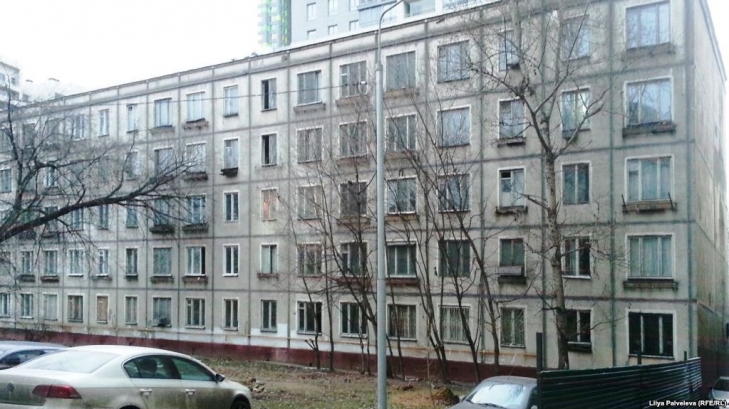Farewell Khrushchyovki? Putin Backs Fresh Push To Raze Ramshackle Soviet-Era Housing

For millions of Soviet citizens in the decades after World War II, they were home: the prefabricated apartment buildings known as khrushchyovki, after the Soviet leader who pushed their construction, Nikita Khrushchev.
But they were also the subject of derision: cheaply built, cookie-cutter housing blocks with paper-thin walls, low ceilings, and a five-story design that allowed authorities to eschew elevators and still remain in compliance with housing codes.
Soon, if President Vladimir Putin has his way, they will be no more. At least, in Moscow.
Putin on February 21 backed an ambitious plan to do away with khrushchyovki, telling Moscow Mayor Sergei Sobyanin that he supports razing the units, which currently house around 1.6 million people in Moscow alone.
«I know the attitudes and expectations of Muscovites. Their hopes are that these buildings will be demolished and new housing will be built in their place,» Putin said, according to a Kremlin transcript. «It seems to me that this would be the correct decision.»
When the mass housing project was launched under Khrushchev, the buildings were seen as temporary dwellings not meant to stand for more than 25 years or so. But they continued to be built until the early 1970s and remained a staple of Soviet cityscapes for decades. Despite significant deterioration, they continued to house people even after the fall of the U.S.S.R.
Butt Of Many Jokes
Faceless, prefabricated Soviet apartment buildings were famously lampooned in the classic 1975 film Irony Of Fate, whose key plot development comes when a drunk protagonist unwittingly travels to a different city and, thinking he’s at his Moscow home, uses his own keys to enter an apartment with the same address in a five-story building.
They also spawned jokes, such as one that riffs on the combined toilet and bath in khrushchyovki, which differed from the separate rooms they occupied in Stalin-era apartment buildings.
«Khrushchev was able to connect the toilet with the bath,» the joke goes, «but wasn’t able to connect the floor to the ceiling.»
Moscow’s previous mayor, the construction enthusiast Yury Luzhkov, launched a program in 1999 to tear down more than 1,700 khrushchyovki by 2011, though the 2008-09 financial crisis and Luzhkov’s departure delayed those efforts.
The program, however, has continued under Sobyanin, Luzhkov’s Kremlin-backed successor. He’s made city beautification efforts a central pillar of his tenure — and drawn allegations of corruption from political opponents along the way.
- Tags:
- residential





